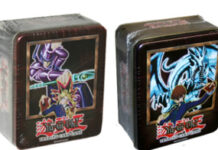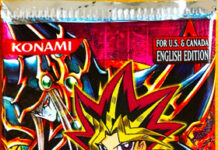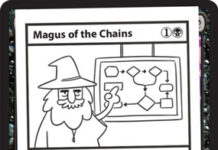Written December 2016
In trying to create some custom cards of my own, as well as viewing other people’s creations, I thought about what constitutes a well designed card and what doesn’t. In a nutshell, a well designed cards is good (unlike Science Soldier), but not too good (unlike Imperial Order), on top of being fun to play and rewarding of skillful play.
Versatile
It can be used in more than one way, depending on the player’s circumstances and overall strategy. The player is given a choice on how to use it. This grants more options for skillful players and punishes low skill players who don’t use it carefully.
Exarion Universe was a piercer, defense wall and beat-stick. Book of Moon was good for blocking attacks, re-using flip effects, breaking combos and stopping continuous effects. Enemy Controller was usable on either turn ; it had an easy to activate effect and a better effect at the cost of a tribute.
Unique
A card that is a clone of another card is a result of lazy design. In the era of archetypes, it is true that every deck needs it’s own searcher, removal option, draw power, revival and so on, and that’s fine. It’s good when those elements can be incorporated into an effect which reflects the principles of the archetype.
Limits to Use
Generally speaking, there should be a limit to how many times per turn you can use a card. Sometimes this is done indirectly. Requiring resources for each time it is used: such as a discard, considerable life point payment or banishing monster(s) from your graveyard can give the player a reason not to use it repetitively.
It is true that unfortunately, “once per turn” has often been used to justify overpowered card effects, but that’s not an inherent flaw of a Once Per Turn Clause.
Can Be An Alternative
Nothing is more of a waste of space than a card that is obsolete out the gate. Whenever someone creates a card, they must think “Will people consider taking out a card from their deck in order to use this card instead?”. If the answer is no, then it’s underpowered. If the answer is yes, try to think about what decks will use it and what cards they will cut. When Beast of Talwar came out, for example, it was pointless because it had 100 less ATK than Summoned Skull and it had no effect.
Can Be Replaced By Another Card
We don’t want to have a card that is so good that there is nothing that can replace it. It is good when deck building process requires thought as to which card a player should prioritize. Pot of Greed was an obvious staple so it required no thought. But Upstart Goblin versus Pot of Duality is a debate that can be had. When Mobius the Frost Monarch came out, some people added it to their decks and some people said “I prefer Jinzo because negating is more certain and long-term than destroying”.
Card Advantage Neutrality
A card that is a -1 (usually requiring a discard or tribute without a significant effect in return) won’t be good because you not only have to use up that card, but another card as well. In the same token, an easy +1 like Delinquent Duo is unfair because it gives the player an advantage without having to work for it.
Typically, cards should at least be 1 for 1. A +1 can be acceptable in a circumstance where you have to demonstrate some kind of skill. For example, Gladiator Beasts gave +1’s only after you were able to win in a battle with them.
Encourages Healthy Player Behavior
All games, by definition, consist of player responding to incentives. When a card is designed, the designer should think about what they’re encouraging and discouraging.
Torrential Tribute and Mirror Force, for example, discouraged players from swarming and playing in an overly aggressive way. Heavy Storm was a grey area because it discouraged people from playing defensively.



